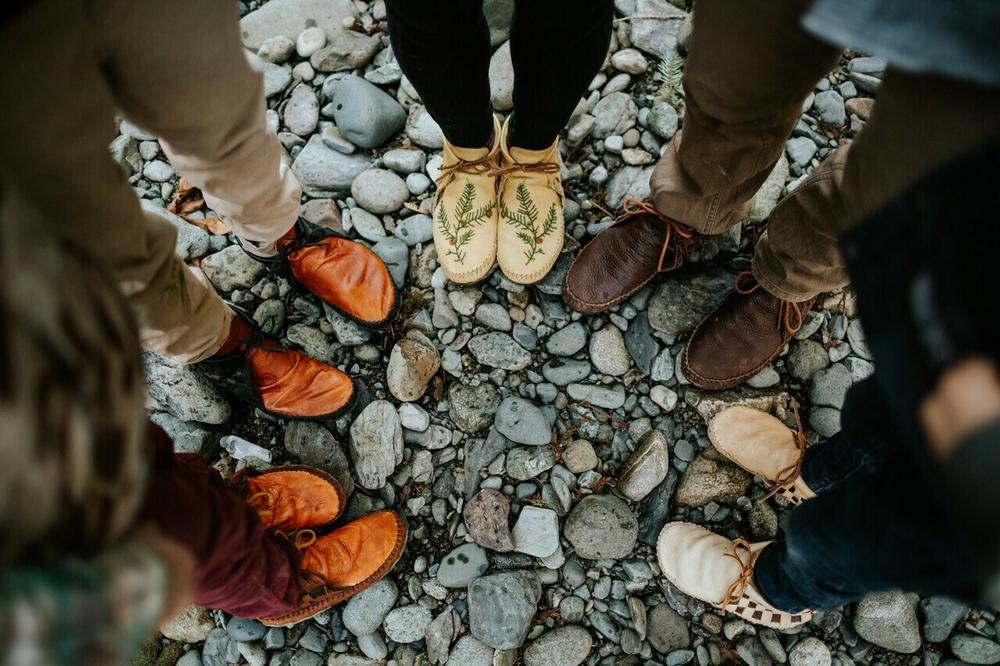Section Branding
Header Content
Peter Pan still hasn't grown up, but Tiger Lily has changed
Primary Content
Updated May 9, 2023 at 1:16 PM ET
After more than 100 years, Peter Pan still hasn't grown up.
But a new version of the old, J.M. Barrie classic does try to correct a character now widely considered racist. In the Disney+ movie Peter Pan & Wendy, Tiger Lily is played by Alyssa Wapanatâhk, a member of the Bigstone Cree First Nation.
Wapanatâhk says, growing up in Conklin, Alberta, in Canada, she loved watching Disney movies. "Every Disney film was my jam. That's how my family was. We just we loved all the classics." Including the 1953 animated version of Peter Pan.
"But of course, there was some stuff that was not done accurately," says Wapanatâhk matter-of-factly.
Among the racist depictions in the movie is a song called What Made The Red Man Red?
"We all grew up with that as Indigenous people. We saw representation that was not done right," she says.
So Wapanatâhk was thrilled that Disney+ not only cast her — a Native actor — but also sought out her feedback in developing a contemporary version of Tiger Lily.
"I was able to bring my culture into it and bring my language into it and just do what I wanted with the role," she says. In this version, Tiger Lily speaks both Cree and English.
Wapanatâhk says her costume is inspired by both archival images and contemporary clothing including, "our dance regalia that we would use in powwow. So you'll see a lot of the same type of bead work, the handmade quillwork that's on there."
In the new movie, Tiger Lily watches over the Lost Boys on Neverland. Some of them wear moccasins made by artisan Jamie Gentry who is Da̱ʼnaxdaʼx̱w and Mamaliliḵa̱la from the Kwakwaka'wakw Nation.
Gentry says, one day, out of the blue, a costume designer she didn't know reached out to her asking if she'd like to make moccasins for a Disney movie.
"I was kind of flabbergasted at first. I'm just one person in the world and how she managed to find me ..." Gentry trails off incredulously.
When she and her family finally saw the Disney+ movie, Gentry says they cheered every time a pair of her moccasins was on screen, though she admits that viewers might not even notice them.
"It's not like there's a spotlight on them or anything," she laughs. "But I know that they're there and that felt really special."
Tiger Lily saves Peter Pan
In the original J.M. Barrie story, Peter Pan rescues Tiger Lily after she's kidnapped by Captain Hook. But in the new Disney+ movie, it's Tiger Lily who saves Peter. More than once.
In one scene, Peter is knocked unconscious after falling down a giant vortex. Tiger Lily heals him with a medicinal plant.
"Peter Pan would not be alive at the end of the film without Tiger Lily's intervention and without Indigenous knowledge intervention," notes Dr. Adrienne Keene, a citizen of the Cherokee Nation and a faculty member at Brown University.
Indigenous people are not fantasy creatures
Keene says the authenticities in the new Peter Pan movie are "remarkable," but not enough to redeem portrayals of Native people.
Keene has made this point before. Back in 2014, when NBC produced Peter Pan Live! and just before Rooney Mara's Tiger Lily appeared in the movie Pan, she wrote an article for Indian Country Today with the headline Why 'Fix' Tiger Lily? Why Can't We Just Let Her Go?
"It just got to the point where I didn't think we needed to keep reimagining Tiger Lily," Keene says, "and reimagining the role of the Native people in Peter Pan because the source material is so, so stereotypical and horrible and bad and all of this kind of incremental progress to try and make those portrayals better wasn't really doing much."
Even the efforts made in the new Disney+ aren't enough, says Keene.
"No matter how authentic and nuanced and perfect the portrayal of the Native people is, the bottom line is you are still placing actual Indigenous folks alongside fairies and mermaids and all of these fantasy creatures — and that's not something that is ever going to be positive for Indigenous people today."
Keene and Wapanatâhk agree that progress has been made when it comes to Native representation on screen. They both cite the recent movie Prey and the series Reservation Dogs as examples.
"But it's just a start," says Wapanatâhk.
"I feel like it's going to just blow up. I imagine it's going to blow up, and I hope so, because I have a few projects that I would like to bring out as well," she says, smiling.
Copyright 2023 NPR. To see more, visit https://www.npr.org.
Correction
In an earlier audio version of this report, the TV series Reservation Dogs was misidentified as the film Reservoir Dogs.


